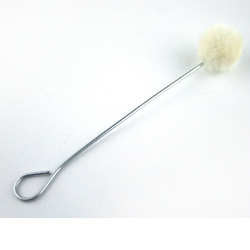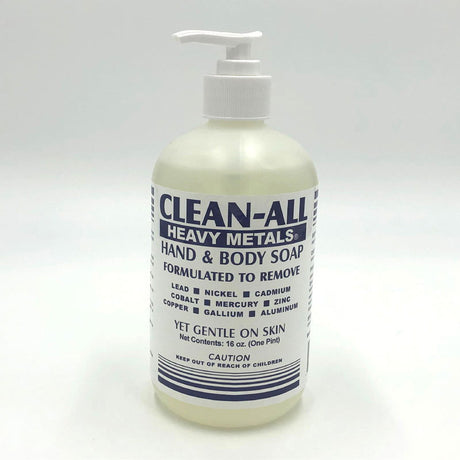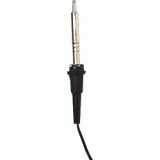How to Effectively Solder
Stained Glass
By James Veilleux
Note: Soldering Stained Glass can be a fun but sometimes frustrating process. There is a definite learning curve involved but, with time and practice, the end result will be worth the effort. In order to even begin the soldering process, you need to have the right tools to successfully create a stained-glass piece.
Below are the 7 essential items necessary to Effectively Solder Stained Glass
- Soldering Iron
The soldering Iron is the most important tool that you will need to solder stained glass. The soldering iron is used to melt the solder that will fuse the foiled stained-glass pieces together. It is important to use a high-quality soldering iron, preferably with a means of controlling the temperature, to make the soldering process successful and increase the soldering iron's longevity. The soldering iron should be hot enough to allow the solder to flow over the seam of the foiled glass pieces. Too much heat will allow the solder to pass through the seam and possibly crack the glass.
- Solder
Solder is a metal alloy that is used to join metal parts together. Solder comes in different variations, but for stained glass, the best choice is a solid-core wire solder. However, you will need to choose the solder that works best for your project or piece. Solder is usually made of Tin and one or two other metals such as Lead, Copper, or Silver. Solder comes in both Lead and Lead-Free variations. Stained glass uses solid solder with an external flux. 60/40 Solder is typically used for stained glass projects. The first number is the percentage of Tin (SN) while the second number represents the percentage of Lead (PB). 50/50 Solder is sometimes used for certain applications and requires more heat to work due to the increased lead content. Search: 158 results found for "solder" – Stained Glass Express
3, Flux
Flux is the chemical solution that is used to clean and join the metals. It helps the solder flow with the Copper Foil or Came. It is placed on the joint before the soldering begins to create a strong bond and hold. Flux comes in either a liquid, gel, or paste form. You will need to find a flux that works with your solder. Flux comes in different forms including Organic Acid, Water-Soluble, Inorganic and other forms. Never use directly from the original container in order to preserve the strength of the flux. Soldering Flux (stainedglassexpress.com) 


- Sponge or Brass Wool
A Damp Sponge or Brass Wool specifically made for soldering is important to have on-hand to help while you solder to help preserve your soldering iron tips. When you solder a stained-glass piece, you need to apply solder throughout the process or project. However, before adding any solder to your soldering iron, you need to clean the tip by lightly dragging it across a slightly damp sponge or inserting it into dry brass wool to remove the oxides and re-tin the tip. This needs to be repeated throughout the soldering process when you notice that the tip has oxidized (blackened). 

- Flux Applicator or Brush
A Flux Brush or Applicator (Q-Tip)is used to apply the Flux onto the metal areas to be joined. The Flux Brush can last a long time if rinsed at the end of each soldering session. If not rinsed, the flux will stay active and corrode the bristles and metal handle of the brush. Flux Brush 12 Pack (stainedglassexpress.com) 

- Heat Resistant Surface
You will need a Flat, Burn-Resistant surface to work on your soldering project. This surface should allow pins to be used for the purpose of securing your stained-glass project from movement. A ceiling tile is a good choice for this surface. Always use the unpainted side to work on.
- Gloves and Mask
If you are using Leaded Solder, it is important to wear chemical resistant gloves at a minimum. A Mask and Safety Glasses are recommended for protection from all flux fumes and solder splatter. We also highly recommend keeping Heavy Metal removing soap on hand at all times.
Clean All Metals Hand & Body Soap – Stained Glass Express

Credit for Info:
Amerway
Canfield
Novacan
Stellar Technical Products
Researched, Interpreted and Arranged By: James A Veilleux 03/08/2023





